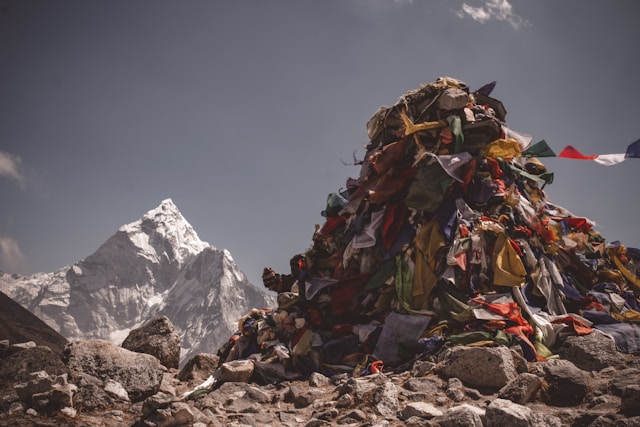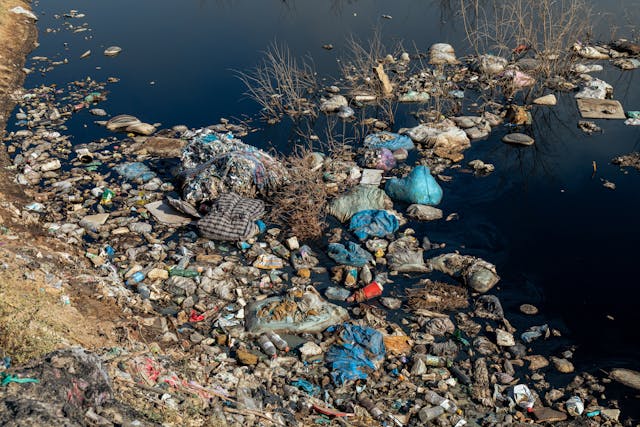Everest is entering a new era of environmental accountability as Nepalese authorities and conservation groups are rolling out practical solutions to clean up one of the world’s most littered mountains. The mountain used to be synonymous with majestic views, but now it’s increasingly associated with frozen cans, abandoned tents and even human waste buried in ice or scattered across high camps. That debris is now moving from being a shameful spectacle to a top policy priority with clear and coordinated action on the ground.
Last season, a government sponsored task force of soldiers and Sherpas removed over 11 metric tonnes of trash – including discarded equipment and human remains – from the Everest region. That was the 4th cleanup since 2019 and timed with the spring climbing season to highlight the urgency and growing institutional buy-in to clean up decades of accumulated litter.
Everest’s New Waste Rules
Climbers on Everest must now carry back at least 8kg of waste when they descend or lose a deposit paid before the climb. The rule has been in place for over 10 years and is a key part of litter control. To improve sanitation after years of poor conditions, the Khumbu Pasang Lhamu Rural Municipality is now giving each climber biodegradable poop bags for human waste.
These odor-neutralizing bags must be returned after the climb, to deal with up to 35,000 lbs of human waste produced every year. This also addresses the environmental impact of improper biohazard disposal which can pollute snowmelt, contaminate water sources and damage the alpine ecosystem. The change is improving sanitation and protecting local communities from health risks.
Technology is also helping. Drones are now being used to lift garbage from Camp 1 at 6,065m to base camp in minutes, replacing the 6 hour trek for Sherpas. Early results suggest drones could be a big part of the cleanup effort, especially where access is difficult or limited.
Local groups like the Sagarmatha Pollution Control Committee have been working on proactive waste management for years. Some camps have waste-pickup pits and barrel toilets, but not all. Sagarmatha Next is also urging climbers and trekkers to reduce waste, even turning discarded gear and bottles into art to raise awareness.
Waste Management Plan
A sustainable waste management plan developed by researchers and local stakeholders has a four step process: sort waste at lodges or homes along trekking routes, collect and transfer separated materials to dedicated stations, preprocess them for recovery, and transport them—via Lukla airport or other routes—back to Kathmandu for proper recycling and disposal.
This includes tackling the growing problem of food packaging waste which builds up quickly during long expeditions and is one of the biggest challenges for recycling at high altitude. With nearly 80,000 visitors in peak seasons generating up to 200 tonnes of waste annually, such a plan is becoming increasingly important to preserve both the ecology and livelihoods.
Nepal’s legal framework also supports this shift. The Local Government Operation Act of 2015 mandates local authorities to manage municipal waste effectively. While budget and capacity is a challenge, that law underpins every procedural reform and community effort.

Tourism, Responsibility and Sustainable Climbing
Tourism is both a lifeline and a liability for the Everest region. Nearly 80,000 visitors each peak season bring in economic opportunities for Nepal through permits, guiding services and hospitality. But that same number generates up to 200 tonnes of waste annually straining local ecosystems and waste management systems.
Some trekking companies and eco-lodges are starting to adopt sustainable practices to reduce this burden—such as using solar power, promoting reusable bottles and offering waste buy-back programs. But the responsibility also lies with climbers and trekkers themselves. Choosing to avoid single use plastics, carrying personal water filtration systems and packing out non-biodegradable waste are simple steps that can make a big difference.
Sustainable tourism on Everest is not about limiting adventure—it’s about not having the adventure come at the cost of the mountain’s fragile ecosystem or the health of local communities.
Inspiring Environmental Leadership
Layered improvements in enforcement, infrastructure, innovation and community are moving us from crisis to cautious optimism on the highest mountain in the world. Everest’s cleanup is not just about a famous landmark but about setting an example for global environmental responsibility.
The message is clear: mountains, rivers, oceans and forests around the world face similar pressures from tourism, overuse and neglect. Everest shows that with clear policies, community involvement and innovative solutions even the most challenging ecosystems can start to recover.
And then there’s the role of storytelling and inspiration in driving global awareness. Adventurers and conservationists who share their experiences—like those you might meet if you were to book Ben Fogle speaker for a sustainability event—help audiences connect emotionally to the urgency of protecting fragile ecosystems. Their voices amplify the call to action, so that lessons from Everest resonate far beyond its slopes.
Climate Change and Everest’s Fragile Ecosystem
Beyond litter climate change is exacerbating the environmental problems on Everest. Rising global temperatures are accelerating the melting of Himalayan glaciers, exposing decades of waste buried deep in ice. This not only complicates the cleanup but also risks polluting water systems that feed millions downstream.
Changes in snowlines and increasingly unpredictable weather make climbing seasons more dangerous and stress the already fragile alpine ecosystem. Scientists warn that these changes may alter the mountain forever, threatening biodiversity and livelihoods tied to the trekking economy.
The waste problem and climate crisis are linked. Protecting Everest means not just better waste management but global climate action to preserve the region’s glaciers, water security and cultural heritage.
Conclusion: A Shared Responsibility
The problems on Everest prove a universal truth — protecting fragile environments requires cooperation at every level. Climbers must take their responsibility up and down the mountain. Governments must enforce policies that put ecological and human health first. And the global community, including tourists, adventurers and environmentalists must recognise that their actions have consequences far beyond personal achievement.
Everest has long been a symbol of human achievement. Now it can also be a symbol of collective environmental stewardship — a reminder that every step towards sustainability, whether on the highest mountain or in our own backyards, matters for the future of our planet.




